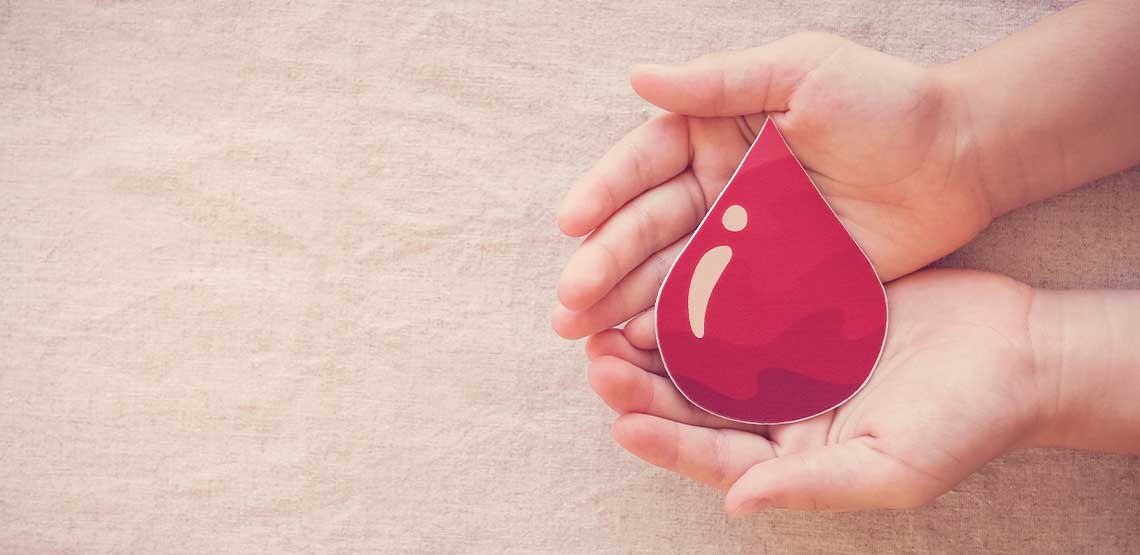What Causes Hemophilia?
Hemophilia is a rare and inherited blood disorder where the blood does not clot as it should. This means that cuts or injuries may bleed out longer than normally, leading to higher risks and complications. So, what causes hemophilia?
About 400,000 people live with hemophilia worldwide. Typically, smaller cuts are not too problematic but internal bleeding from trauma, accidents, or surgery are a high concern for individuals with this condition.
Individuals with hemophilia lack certain blood proteins that aid in the clotting process. Luckily, there are treatment options, which we will explore later on in this article. Before we dive into treatment, we will look at the causes, symptoms, and diagnosis process of this disorder.
Causes of Hemophilia
As previously stated above, hemophilia is an inherited disorder. It is caused by a mutation in the blood clotting protein genes. This mutation prevents the creation of these proteins or may cause them to work improperly, leading to clotting issues.
Interestingly, while hemophilia often runs in the family, many individuals diagnosed with it do not have a family history of hemophilia. This may mean that other family individuals are carriers, but do not actually have hemophilia.
In some circumstances, hemophilia may be acquired. This is called “acquired hemophilia.” This type of hemophilia is when a person’s immune system attacks the clotting factors within the blood. It may arise during pregnancy, through other autoimmune conditions, cancer, and multiple sclerosis (MS).
Hemophilia Symptoms
Common symptoms of hemophilia include:
- Excessive bleeding from injuries or cuts, or post-surgery or post-dental work
- Large bruises
- Bleeding after vaccinations or shots
- Swelling, pain, or tightness in the knees, elbows, or ankles
- Blood in stool or urine
- Unexplained nosebleeds
This condition can also become very dangerous, such as when bumping your head, causing underlining bleeding. While at first it might not seem like much, if you are experiencing headaches, nausea, fatigue, vision issues, weaknesses, or seizures afterwards, it is important to seek out emergency medical care. This is why individuals with severe hemophilia need to be particularly cautious.
The Diagnosis Process
If you have a family member with hemophilia, testing is performed right after birth. Additionally, a doctor may test for this disorder if a baby has signs of excessive or uncontrollable bleeding.
In order to diagnose hemophilia, blood tests are performed to determine if certain blood factors are missing or mutated. These blood tests may also determine if the blood is clotting correctly.
Related Search Topics (Ads)
Treatment Options
Treatment may depend on the severity of hemophilia you or a family member is experiencing. Your doctor will discuss options with you. For severe cases, infusions of the specific clotting factor are given regularly so that your blood can clot efficiently. This is called “continuous replacement therapy.”
Other options may include:
Desmopressin
Desmopressin is a man-made vasopressin hormone that causes the body to release the clotting factor. This type of treatment is given via nasal spray or injection.
Clot Medication
Certain medications can be given to help prevent clot breakdown. Additionally, fibrin sealants may be applied directly to the skin or a wound to encourage clotting and healing. Fibrin sealants are often used in dental situations.
Physiotherapy
Internal bleeding can lead to damage within the joints, causing varying degrees of pain, stiffness, and discomfort. If severe damage has occurred due to hemophilia, your doctor may recommend physiotherapy to help manage your pain and improve your function, strength, and mobility. If the damage is quite severe, you may also require surgery to repair the joint.
First Aid
For small and minor cuts, immediate first aid should help solve any bleeding. This involves using bandages and compression to get the bleeding under control. Ice is also a great tool to use to help manage bleeding since it can slow it right down.
Additional Vaccinations
For any excessive bleeding disorder or a disorder where you need continual injections (such as for the protein factor missing in the blood), additional vaccinations are always a good idea to ensure you are protected either way. Usually, hepatitis A and B vaccinations are recommended to those with hemophilia.
Other Considerations
Exercising regularly can help protect your joints and manage any pain in that regard. It’s further a good idea to avoid specific pain medication, such as aspirin and ibuprofen (usually acetaminophen is safe for those with hemophilia), since these can cause further bleeding. Taking blood thinners is also to be avoided since these can prevent the blood from clotting.
Taking extra care to prevent injuries is also critical since some injuries can lead to more serious situations when bleeding cannot be controlled. If your child is diagnosed with hemophilia, ensure they wear knee pads, helmets, elbow pads, and other protective gear when performing more risky activities, such as outdoor recreational sports.
You may also want to obtain a medical alert bracelet, in case of any accidents where you or your child is unable to communicate a diagnosis of hemophilia. You should also inform your child’s school, any coaches, or daycare providers of this diagnosis.

